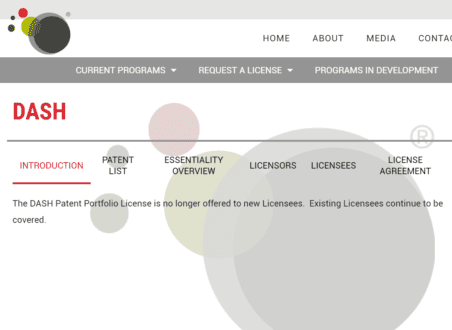On August 12, 2019, I reported in Streaming Media Magazine that the hugely unpopular MPEG LA DASH Pool might be shutting down. I shared what was purported to be a draft letter from MPEG LA President Larry Horn to pool members which stated the following:
“Regrettably, with more than one year’s experience marketing the DASH License according to its revised terms, we have concluded that it is not a viable pool license in its present state. The patent list is perceived as too thin, and many principal patent holders are missing. Although we have had some success marketing the license to smaller DASH licensees, large DASH users show little interest and we believe they will continue to pursue alternatives. We also understand that the current patents may be the subject of an invalidation campaign at possible cost to individual patent holders.”
MPEG LA wouldn’t answer my calls or emails so I was unable to verify the letter which I received from a trusted colleague.
I just checked (10/4/2019) the MPEG LA site and noticed the statement shown in the image above, “The DASH Patent Portfolio License is no longer offered to new Licensees. Existing Licensees continue to be covered.” There was no additional information in a press release or in the FAQ section.
In my view, MPEG LA is a very reputable patent pool administrator and enjoyed great success with both the MPEG-2 and H.264 patent pools. By success, I mean that implementors benefited from one-stop shopping which produced huge penetration in multiple markets, which likely delivered sufficient royalties to enable patent owners to recoup their R&D investments and more so.
The failure of this pool demonstrates that unless you have many of the most essential patents relating to the technology and the will and funds to defend them against deep-pocketed potential licensees, you’re better off not launching the pool in the first place.
 Streaming Learning Center Where Streaming Professionals Learn to Excel
Streaming Learning Center Where Streaming Professionals Learn to Excel









